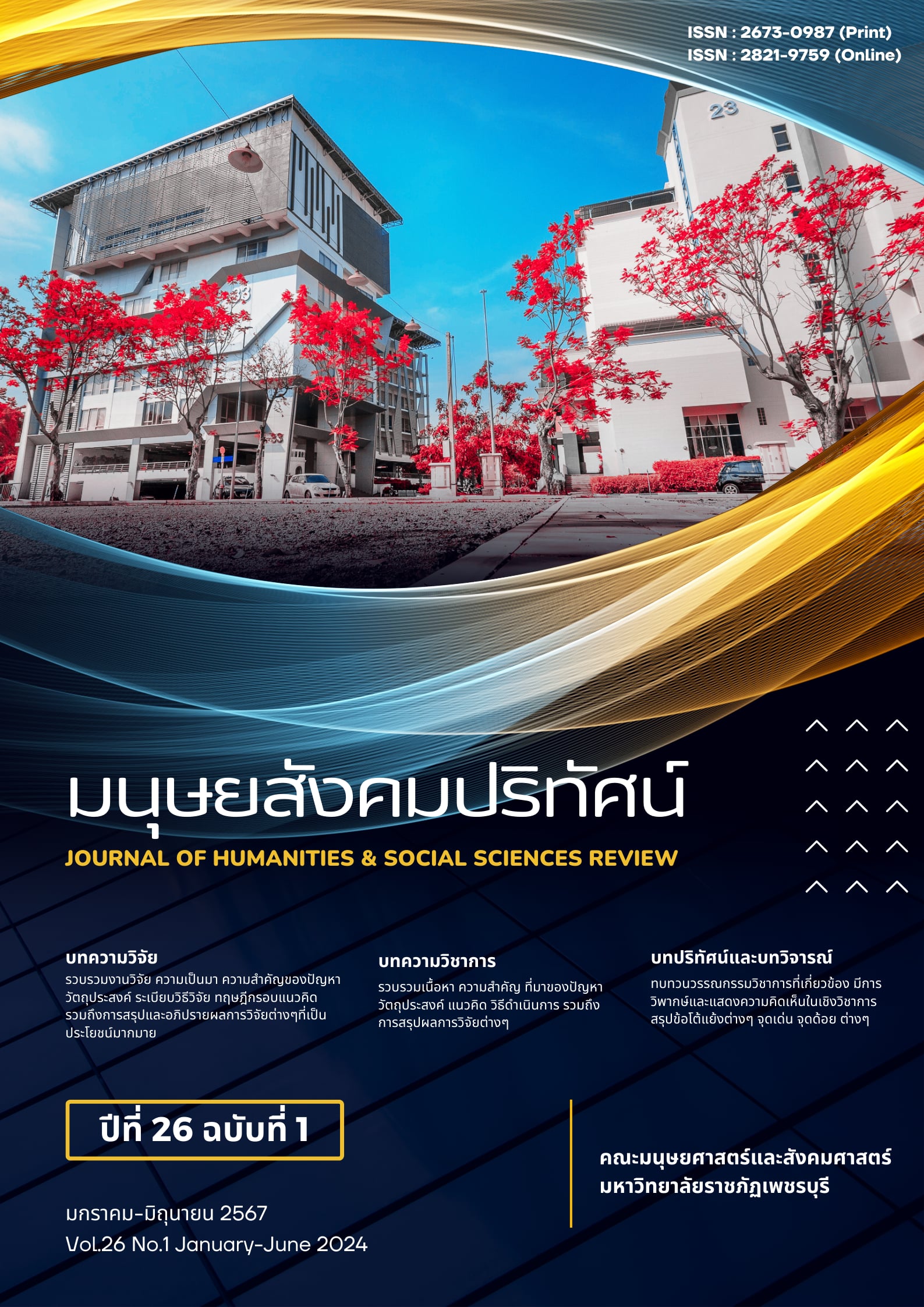A study and analysis of the characteristics and problems of the exhibitions of the China Grand Canal Museum of the People's Republic of China
Main Article Content
Abstract
This research aims to (1) collect and organize the display data of the basic exhibition hall of the Grand Canal Museum of the People's Republic of China (2) analyze the characteristics and problems existing in the basic exhibition hall of the Grand Canal Museum of the People's Republic of China. This research is a mixed-method research, qualitative and quantitative, studying and analyzing the characteristics and problems of the display content of the basic exhibition hall of the Grand Canal Museum. It was analyzed through a questionnaire survey and expert interviews. The questionnaire employs a sample of 100 visitors and the interviews are conducted with 2 experts in innovative media, 2 experts in Grand Canal culture and 1 curator. From the study of data collection and questionnaire, it was found that the nature and problems of the exhibition do not reflect the role of the museum. They are not consistent with the museum's objective of knowing, learning and understanding the importance of culture. The exhibitions of Hall 1 and Hall 3 of the Basic Exhibition Hall in the Grand Canal Museum correspond to the location of the museum and can disseminate information on the topic of "Culture flows Beautiful Life" of the Grand Canal Museum of the People's Republic of China in Yangzhou. From analyzing the interview data, it was found that some characteristics and problems still existed in the exhibition process. (1) In Hall 1, there is a complex hydraulic engineering system with a rich set of professional knowledge which is not easy to understand. This can be amended by supplementing relevant video annotations or interactive design to convert and display the exhibition's thematic information in a way that is easily understood and accepted by the audience. Moreover, people who have played important roles on the Grand Canal should be appropriately acknowledged and represented. (2) In Hall 3, the exhibition fails to clearly demarcate between different time periods and city areas, which is not conducive to the task of disseminating Grand Canal culture.
Article Details
1. Any views and comments in the article are the authors’ views. The editorial board has not to agree with those views and it is not considered as the editorial board’s responsibility. In case, there is any lawsuit about copyright infringement, it is considered as the authors’ sole responsibility.
2. The article copyright belonging to Faculty of Humanities and Social Sciences, Phetchaburi Rajabhat University are copyrighted legally. Republication must be received direct permission from the authors and Phetchaburi Rajabhat University in written form.
References
GONG Liang. (2021). Construction orientation and development requirements of the Grand Canal Museum of China. Southeast Culture (03), 119-124+190+192.
Tian Tian. (2022). How the Permanent Exhibition Communicates the Theme Positioning of the Museum: A Case Study of the China Grand Canal Museum in Yangzhou. Southeast Culture (S1), 107-109.
Wu Meng and White Lotus. (2021). Basic Logic and Construction Methods of Historical Museum Exhibition. Museum Management (02), 47-54.
Xu Pengfei and Shunfa Han. (2022). Narrative Studies in Intangible Cultural Heritage Museums. Beijing Culture & Creativity (03), 40-46.
Zheng Jing. (2021). How to develop the culture of the Grand Canal Museum in Yangzhou as an example. Art Observation (10), 27-28.


